Red, Red Wine Infused Cupcakes
Have you ever wanted to drink your wine and eat it too?
Well here’s your chance!

We teamed up with local baker The Mixing Bowl by Jules to create this recipe. These chocolate cupcakes are infused with our homemade red wine, filled with a raspberry and wine chocolate ganache, and topped with cream cheese frosting.
Decadent? Yes! But sometimes you just need to treat yourself!
Here is what you need:
Cupcakes
- 2 cups of sugar
- 2 eggs
- 1 teaspoon of vanilla
- 1 ¾ cups of all-purpose flour
- ¾ cup chocolate cocoa
- ½ cup of vegetable oil
- 1 cup of red wine
- ¼ teaspoon of salt
- 1 ½ teaspoons of baking powder
- 1 ½ teaspoons of baking soda
- 1 cup of water (boil)
Ganache
- ½ cup of cream
- ½ cup of fresh raspberries
- ½ cup of red wine
- 1 ½ cups of semi-sweet chocolate chips
Frosting
- 2 sticks of salted butter
- 8 oz of cream cheese
- 6 cups of powdered sugar
- Pre-heat your oven to 350 degrees and yields approx. 24 cupcakes.
- Bring one cup of water to a boil on your stove top. Once it starts boiling turn the heat off and let it cool down.
- Next you’re going to start making the batter. Pour the sugar, eggs, and vanilla into your mixer and blend.
- Once the ingredients are fully incorporated, add the flour and cocoa, one cup at a time.
- Next you’ll add in the vegetable oil and slowly pour in the red wine while mixer is on.
- After that, add the salt, baking soda, and baking powder and mix until everything is blended. Don’t over mix!
- Turn the mixer back on and slowly pour the water into the batter. The batter will be thin.
- Next place your cupcake liners in your pans. You’ll want to fill each about ½ way full. Tip: If you have a cookie scooper, use that to pour batter otherwise a spoon will work!
- Bake for 15-17 minutes or until the top is domed and sturdy. Once they are done let them cool for at least 30 minutes before filling and frosting.
Raspberry wine ganache

- Pour your cream and raspberries into a sauce pan on medium heat. Use a spoon to break down the raspberries while they are heating up.
- Pour in the red wine and continue to stir and let mixture come to a boil. Once it starts bubbling, turn off the heat.
- Add the chocolate chips and whisk until incorporated.
- Wait at least an hour for the ganache to thicken up or refrigerate overnight.
Cream Cheese frosting

- Add both butter and cream cheese to mixer and mix on the lowest setting for 1-2 minutes.
- Add each cup of powdered sugar one at a time and blend until frosting is smooth and fluffy.
Now the fun part…building your cupcake
Once your cupcakes are cool and your ganache is thicker, you can either fill your cupcakes with ganache or dip the top – it’s up to you!
- Take a knife and cut out the centers of your cupcake and save the top of it!
- Using a spoon or a piping bag if you have one, fill the centers with the chocolate ganache. If you refrigerate it overnight, you’ll want to heat it up for 30 seconds to 1 minute before adding.
- Put the top back on and cover the ganache!
- Next you can, either frost with a knife or use your favorite piping tip and swirl! For the finishing touch, add a raspberry for garnish!

And finally ENJOY your cupcakes with your home made wine!
The Musto Crush Crew certainly enjoyed these cupcakes! 🙂
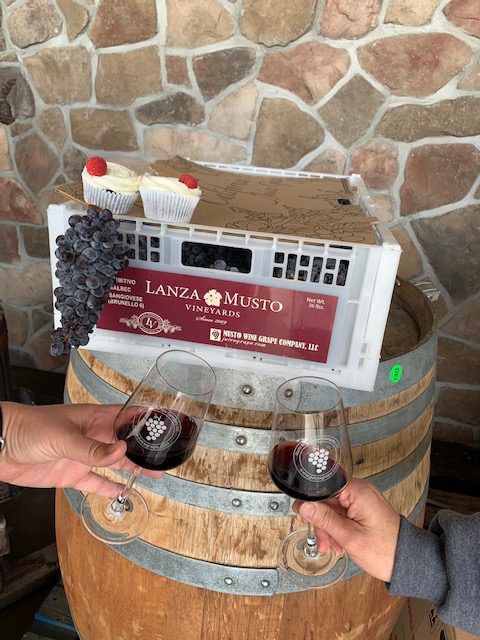
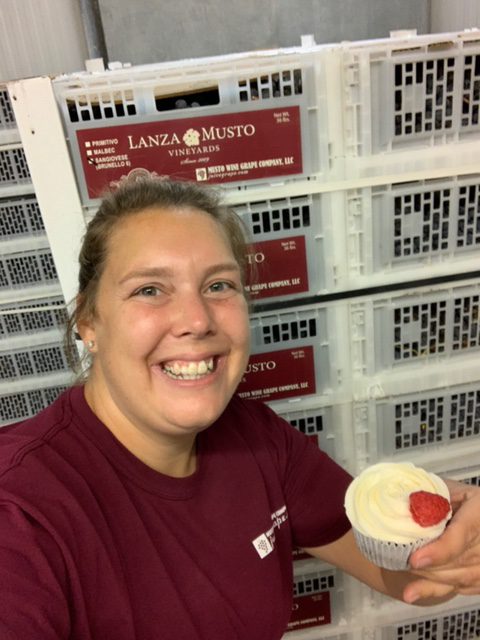
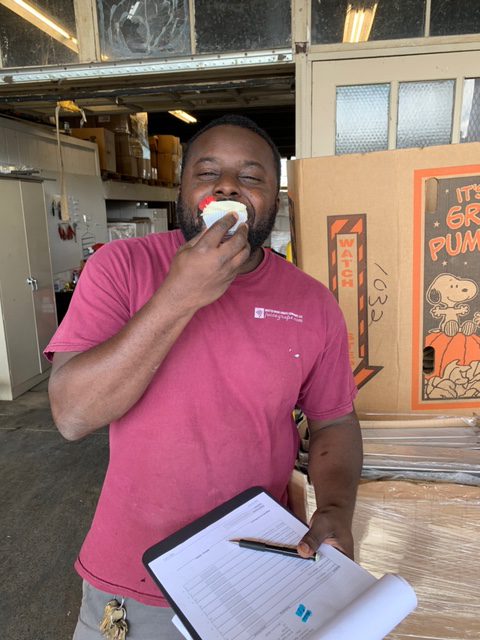
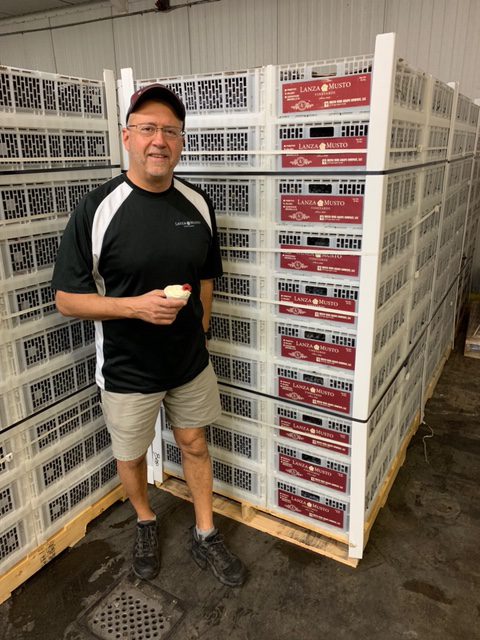
Ready to make your own Wine? Musto Wine Grape is here to supply you with everything you need to make the wine of your dreams. Email us at sales@juicegrape.com or call (877) 812-1137 to speak with someone who can get you started!
Beginner Blending Wine by Winemaker Chris Pallatto
Click. With just a few sips, something clicked, and our winemaking group became better wine tasters and, hopefully, better winemakers. Our group held our first blending summit to assess our 2019 varietals and make a legendary blend. This post is about our process for blending wine and lessons learned.
Managing Expectations
To be clear, this is not an article for beginners by experts; rather, it chronicles our journey as beginners to become better winemakers. While I wish I could describe our wines with terms like “robust,” “fruit-forward,” or “hints of leather,” what I typically smell is just, well, wine. Bold and boozy, but just wine. Over the past year, our group’s goal has been to discuss and make notes of each tasting throughout the year and watch each varietal progress. As a spoiler, this blending experience did more for our collective palettes than any regular tasting.
Meet the wines:
- Wine #1: 2019 Malbec from Lodi. pH 3.43, TA of 7.2, and ABV 13.2%. Malolactic fermentation complete. Bulk aged in steel. D254 yeast.
- Wine #2: 2019 Cabernet Sauvignon from Lodi. pH 3.68, TA of 6, and ABV of 13.75%. Malolactic fermentation complete. Bulk aged in steel. D254 yeast.
Setting the stage
A recommended approach for blending is to assess each wine, make a note of the characteristics of each, and determine which wine would bring to the other and what it might be lacking. I’ve read a few different articles and feedback from winemaking groups that you should make tiny incremental adjustments of one or two percent until the blend is just right. We decided ahead of time that our group wasn’t likely to distinguish that difference and wanted to make bolder adjustments and refine if needed. I think the next time we do a blending, we’ll be ready for the first approach.
We marked and arranged plastic wine cups into rows of pre-determined blends for each taster with the 100% varietal on opposite ends of the row. We set up the rows as follows:
100% Cab
90/10 Cab/Malbec
75/25 Cab/Malbec
50/50 Cab/Malbec
25/75 Cab/Malbec
10/90 Cab/Malbec
100% Malbec
Let the tasting begin!
We wanted to stick with descriptors we could determine and collectively recognize as a group. Everyone tasted at the same time, and we went around our socially distanced circle and weighed in. We all sampled the Cab first, and it described it as very robust, with a long-lasting mouthfeel and high tannins. For a 10-month old wine, it’s ready to be bottled in a couple of months and will thrill its drinkers. We described the Malbec as “juicy” with lots of fruit flavor, a bit thinner, and young tasting with a hint of a green apple or astringent taste. We expect to bottle it happily in a couple of months, but suspect it will be much better in a year or two.
To a person, we agreed that the Cab was the star of the show. Interestingly, while we loved the Cab Sav as is, when we started to discuss what might make it better, we all arrived at the same conclusion. We anticipated that a bit of Malbec would add a bit of brightness to the Cab and round out the tannin mouthfeel.
After determining that we were leaning towards a Cab heavy blend, we tried the 50/50 blend. Universally, we agreed the astringent taste of the Malbec overpowered the Cab, and that blend was not better than either varietal on its own. It was also interesting to see that everyone picked up on the green apple or “young” taste of the Malbec.
We then tried the 90/10 Cab/Malbec blend and could distinguish a bit of the Malbec, but the addition did not make a substantial difference. We wanted to add a bit more fruit flavor and drop the tannins, so we agreed that this mixture wasn’t quite right. However, it was clear that we were heading in the right direction.
Lastly, well, almost lastly, we tried the 75/25 Cab/Malbec, and it was enjoyable. “Approachable” seemed like the perfect wine tasting descriptor. It was easy to drink and left a happy memory on your tongue. I prefer hoppy beers and tannin heavy wines but appreciate less dramatic flavor profiles.
We did try the more Malbec-y leaning blends, but for better or worse, we had made our minds up after the 50/50 blend that the sweet spot was going to be Cabernet Sauvignon heavy.
Next Steps
We bottled six gallons of our new “Calbec” blend and will let the wines mellow together for the next two months. Before bottling day, we may repeat and see how the stand-alone wines are maturing, particularly the young-tasting Malbec. We are also going to do a blind taste test with our wives on bottling day to see if there is a clear winner from an unbiased and willing audience.
Next year, I think we will be more intentional with our blends versus the pre-set blend levels. It was very telling that each of us collectively picked up the changes and agreed on the direction we wanted to go with the blend. If we were to incrementally move from the 100% Cab to the Cab blend by adding the Malbec, we’d end up where we needed to be. It was very enlightening to be critical of the wines and think of it in terms of each descriptor or profile as being on a scale.
There are certainly worse hobbies! I am not sure there is a right way or a wrong way, but the experience was certainly fun and a perfect reason to get the group together, taste our wine, and plan for our Fall pressing.
Chris Pallatto is an amateur winemaker and part of the Tight Knit wine group in Chester, CT, and a supporting member of the infamous DeFazio group in Prospect, CT.
Ready to make your own wine? Musto Wine Grape is here to supply you with everything you need to make the wine of your dreams. Email us at sales@juicegrape.com or call (877) 812-1137 to speak with someone who can get you started!
Discovering an “Old World” Wine — Teroldego
Discovering an “Old World” Wine — Teroldego
By Winemakers Julie and Richard Chalifoux
By now, many of you are probably familiar with “Old World” wines such as Barbera, Gamay, and Nebbiolo. A wine which you may be less familiar with is Teroldego [teh-rawl-DEH-goh]. Teroldego is a red wine grape that is grown in the Trentino-Alto Adige region in northeast Italy. While it has been in Italy since the 15th century, it is not grown widely elsewhere. However, this grape has been receiving increased attention from California grape growers, primarily near Lodi in the Central Valley, because of its prolific growth, heavy yields, and consistent quality.
Teroldego is a sibling of Dureza, one of the parents of Syrah. You can easily see the connection to Syrah with its dark-skinned berry, fruity flavor, and medium to bold tannins. It is a wine worth making, since it can be drunk either young or well-aged.
Grape Selection
In 2018, Musto added Teroldego to their grape varietal selection. Hope you didn’t miss them this past season; these grapes were a must-see! They were exquisitely packaged and bigger than your hand – 36 grape clusters/36 lbs. What a presentation!
Teroldego is similar in nature to other wines we have made, so my husband and I decided to test our winemaking skills and try something new. We planned on making a small batch in a 5 gallon carboy, so there was not much room for experimenting. Through further research, we found it is an Italian grape that produces reasonable tannins, is easy drinking, and possesses intense fruity flavors with dark thick skins.
Balancing and Yeast Selection
The grapes were clean with huge clusters — we ran the pH and acid numbers, the acid was a bit low so adjustments were needed. Note: this will be an easy grape to blend with hybrid grapes that are typically higher in acid. It will enhance fruit characteristics, add tannins, improve acid, and bring a nice rich color to your wine.
There were a few yeasts that would be a good choice – ones that will enhance the fruit characteristics, keep the “Old World” Italian style wine, and work well with the tannins. We used BRL97, but any one of these would work. We have used this yeast on other wines we make with great success. We also use BRL 97 on our Tannat wine.
| Yeast Strain | Alc. Tolerance | Flavor Profile |
| D254 | 16% | Big mouth feel and rounding of tannins. Intense fruit: more dried than fresh with a focus on berry and jam characteristics. Helps with color stability and is useful for adding body to blends. |
| D80 | 16% | Big volume and fine grain tannin flavors of plum and spice. Great for bringing more positive tannin intensity to a blend. |
| BRL97 | 16% | Mainly used in Pinot Noir, Zinfandel, and Italian Wines. Enhances color stability, maintains structure and is favored when long aging is planned. |
Cold Soaking
This grape has thick skins, and experience has taught us that the thicker the skin, the longer the cold soak. Some of our hybrids have thicker skins like Teroldego and don’t like to release tannins easily. We treated this grape the same way: cold soak for 6 days, and be sure to add enzymes. Note: when cold soaking for a longer period of time (i.e. 6 days), watch the room temp. You really want it to be cold (below 40° F). Wild yeast will take over if your must is too warm.
Winemaking process
We do not alter the winemaking process, however, there are a couple things that we do faithfully.
- Feed your yeast – when pitching the yeast be sure to add the proper nutrients – around 3 days later or approximately 1/3 lower brix, feed your must, we use Fermaid O. Important to keep your grapes and yeast happy, happy, happy – no stuck fermentations. We also at this time, co-Inoculate with VP41 Malo, it does really well with BRL 97.
- Rack off the gross lees – when fermentation is done, don’t wait to rack off your wine! This is important to get good wine off of stinky lees.
Wine Recipe for Teroldego
| Wine Produced: | @ 5 gallons of wine (with 3 cases/36 lbs-case) |
| Finished pH: | 4.1% |
| Finished Acid: | .7g/liter |
| Brix at crush: | 25 (14% alc) |
| Cold Soak: | 6 days |
| Yeast used: | BRL97 |
| Malo: | VP41 |
| Lightly Oaked: | Medium French stick used 2 ½ spirals |
| Tasting Notes: | On the nose; butterscotch, vanilla, and black raspberry. This wine has nice acid, soft tannins, medium body – very easy drinking wine with tastes of mulberry, boysenberry and hints of herbs, cedar, and mocha on the finish. |
| Lessons Learned: | When the wine is young it takes on fruit characteristics, but it loves oak – as the wine ages more of the oak characteristics will come through. If you prefer lightly oaked wines use less oak sticks. |
Stay with me…I promise there is a recipe for you to try! This wine is food-friendly and very approachable. We recently opened a bottle after 2 years of aging it has really come into its own, with nicely-blended oak and a fruity flavor. The tannins we were able to release during cold soaking also mean that this wine will still be wonderful for a few years to come. Try it with smoky foods like wood fired pizza, burgers, stews, or any Italian cuisine with either red or white sauces. I encourage you to try something new, something bold – try making a lovely wine like Teroldego. Alla salute!
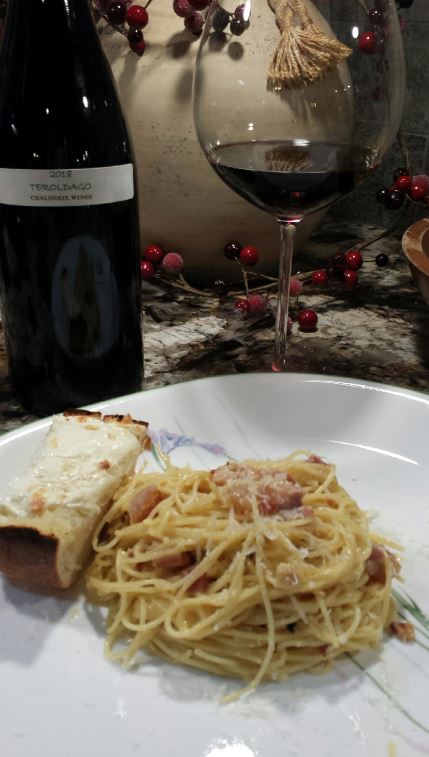
Spaghetti Carbonara
Teroldago is really yummy with Spaghetti Carbonara. For this wine, serve it in a Pinot Noir glass and it is recommended to open the wine 1 hour before serving. Recipe follows:
- Salt for pasta water
- 2 large eggs and 2 large yolks, room temperature
- 1 ounce (about 1/3 packed cup) grated Romano, plus additional for serving
- 1 ounce (about 1/3 packed cup) grated Parmesan
- Coarsely ground black pepper
- 1 tablespoon olive oil
- 3 ½ ounces of pancetta or bacon, sliced into pieces about 1/4 inch thick by 1/3 inch square
- 12 ounces spaghetti (about 3/4 box)
- Place a large pot of lightly salted water (no more than 1 tablespoon salt) over high heat, and bring to a boil. Fill a large bowl with hot water for serving, and set aside.
- In a mixing bowl, whisk together the eggs, yolks and Romano and Parmesan. Season with a pinch of salt and generous black pepper.
- Set the water to boil. Meanwhile, heat oil in a large skillet over medium heat, add the pork, and sauté until the fat just renders, on the edge of crispness but not hard. Drain fat and remove from heat to set aside.
- Add pasta to the water and boil until a bit firmer than al dente. Just before pasta is ready, reheat pork in skillet, if needed. Reserve 1 cup of pasta water, then drain pasta and add to the skillet over low heat. Stir for a minute or so.
- Empty serving bowl of hot water. Dry it and add hot pasta mixture. Slowly stir in the egg and cheese mixture adding some reserved pasta water if needed for creaminess. Serve immediately, dressing it with a bit of additional grated pecorino and pepper.
Ready to make your own Teroldego? Musto Wine Grape is here to supply you with everything you need to make the wine of your dreams. Email us at sales@juicegrape.com or call (877) 812-1137 to speak with someone who can get you started!
Wine Spotlight: Fiano
Fiano
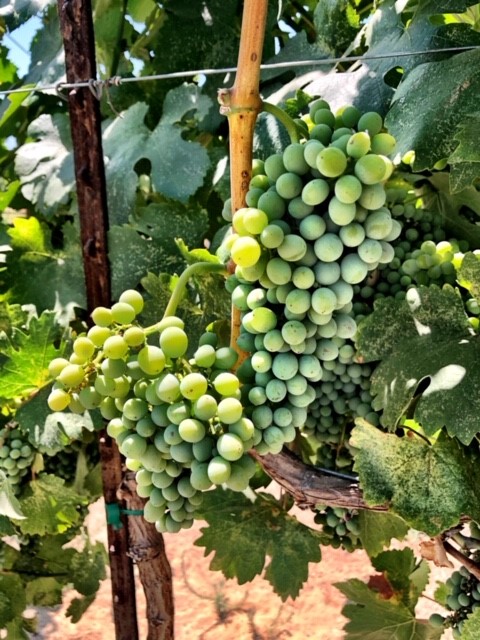
A Little History:
Fiano is an Italian wine grape variety that originated and is grown mostly in Southern Italy; specifically in Campania. It’s roots are so deep in Italy that historians believe it was used to make a wine the Romans referred to as “Apianum”. Now Australia, Argentina, and California are starting to experiment with this vibrant and bold white wine grape.
California and Fiano Notes:
The Fiano grapes grows well in California’s Central Coast and Central Valley due to it’s Mediterranean climate, similar to Southern Italy. Fiano is know for it;s low yeilds in the vineyard and it’s sweetness on the vine that attracts bees. A grape that was once lost ot history because of it’s lower yeild and inability to produce cost effective juice, is now going through a renaisance period. Labeled a “classic” vareity, with new winemaking technology wineries are able to produce complex, interesting, and profitable Fiano wine.
Wine Notes:
Pale straw yellow in color, Fiano expresses floral, tropical, and nutty notes on the nose. On the palate slight hazelnut, apricot, blood orange, and honey notes, can be enjoyed. If the wine is aged 2-3 years in bottle, those flavors can develop into spicy notes over time.
Winemaking Notes:
Limiting oxidation is key when creating this wine. As premature oxidation can mute the vibrancy this grape is known for. However, many winemakers are using Fiano to experiment with less aging and skin contact white wine creation.
For more on how to make white wine from grapes click HERE
*All white grape varieties are available in 36lb cases or in 6 gallon juice pails sourced from Lodi, CA.
For more information regarding the Fall Harvest please feel free to contact us at sales@juicegrape.com or give us a call at 877-812-1137. We are looking forward to helping you with your next great wine!
B-Brite: Product Spotlight
What is B-Brite?
B-Brite is an eco-friendly cleaner that uses sodium percarbonate and sodium carbonate to remove stains and fermentation residues. It contains no chlorine, which can be dangerous around wine. If chlorine comes in contact with your wine or winemaking equipment, it can result in “cork taint.”
It is not a sanitizer or disinfectant, so you’ll still need some SO2 handy to sanitize your equipment afterwards. B-Brite does have moderate anti-microbial properties, however, that can be beneficial in fermentation settings. It is safe to use on all materials and equipment.
How do I use it?
First, dissolve one Tablespoon per 1 gallon of warm water. Second, wash your equipment with the solution. Lastly, rinse with clear, cold water. For descaling of significant mineral buildup, a 20-30 minute soak in B-Brite solution might be required.
Where can I get it?
You can find and purchase it here. We carry it in multiple sizes ranging from 8oz to 5lbs. If you need assistance in cleaning your winemaking equipment, check out our Free Cleaning and Sanitizing video (here), or give us a call at (877) 812 – 1137 and a sales associate will be here to help you find what you need.
Wine Grape Spotlight: Mettler Ranch Zinfandel
Wine Grape Spotlight: Mettler Ranch Zinfandel
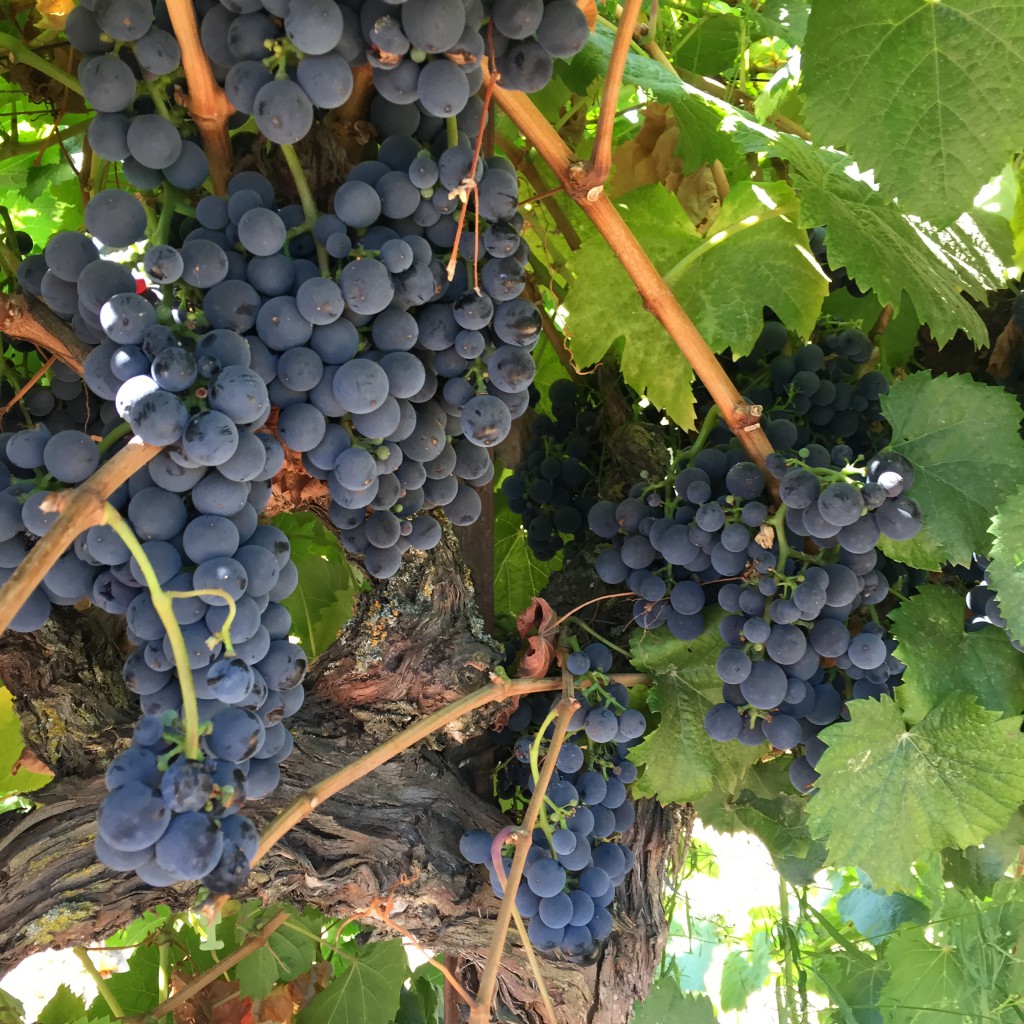
When making Mettler Ranch Zinfandel you can create a wine with earthy and smoky aromas. Along with a complex medley of flavors including plum, blackberry jam, tobacco, anise, and sweet oak. The sturdy but softly integrated tannins yield to subtle oak notes (if you make an oak addition) as the wine lingers on the palate. These grapes create a wine full of Zinfandel personality! Winemaker Adam Mettler suggests some light French oak to add a little extra complexity.
If you can hold off drinking your wine right away and lay it down for 1-2 years it will only gain more of that zesty, delicious personality. If you’re interested in trying out a different Zin this year, Mettler Ranch is a great choice. Email sales@juicegrape.com or call the office at 877-812-1137 for more details on how to reserve these grapes.
The Mettler Family has been farming wine grapes since the 1800’s. Recognized in the Agricultural Hall of Fame, they are 8th generation grape growers in Lodi, CA. With over 800 acres farmed in Lodi county, some vineyards being upwards of 100 years old, these vines are meticulously managed and maintained. All of their vineyards are LODI RULES certified and some are Certified Organic through the CCOF (California Certified Organic Farmers).
Lodi has a classic Mediterranean climate with warm, dry summers and cool, moist winters. The dry warm summer days allow Lodi grapes to develop full, ripe fruit flavors while the distinctive breezes maintain the natural acidity for structure and complexity in finished wines.
The Mettler Zinfandel is sourced from their vineyards by the Mokelumne River, referred to as “Old Lodi.” The soil is sandy and this sub appellation is known for being an epicenter for Old Vine Zinfandel. The vines are 50 years old, sustainably farmed, and certified through LODI RULES.
Making Mettler Ranch Zinfandel (5-6 gallons):
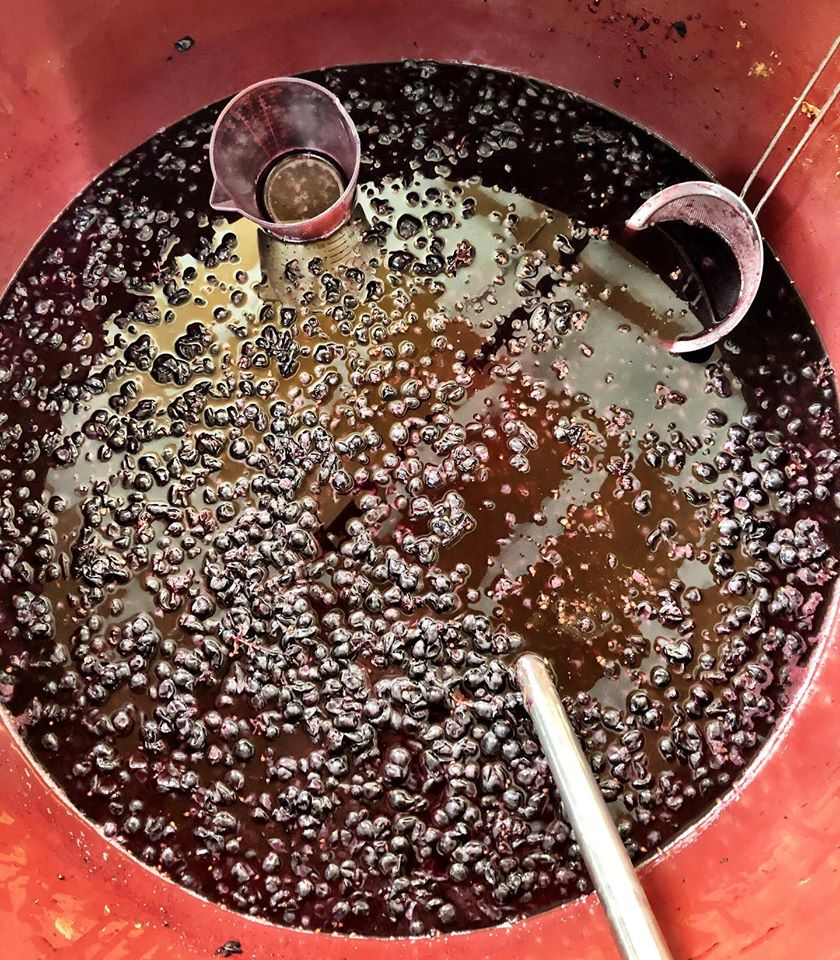
Ingredients:
- 2-3 cases (36lbs) of Mettler Ranch Zinfandel grapes
- 1.6 gms of Potassium Metabisulfite
- 3mL of Color Pro
- 1 – 6gal package of Go-Ferm
- 1 – 6gal package of chosen yeast (see yeast suggestions below)
- 1 – 6gal package of Fermaid K
- 1 – 6gal package of Fermaid-O
- 1 – 6gal package of Malolactic Bacteria
- Optional Additives:
- 1 – 6gal package of Tannin FT Rouge
- 1 – 6gal package of Opti-Red
- 1 – 6gal package of Booster Rouge
- .9oz of French Oak Dust
Yeast Suggestions:
Equipment:
- 1- 6 gallon carboy
- 1 – 5 gallon carboy
- 1- 50LTR fermentation pail w/lid
- 1- Crusher Destemmer or utilize Musto’s Crush/Destemm service
- 1- Press
- 2 – Airlocks
- 2- Drilled Bungs to fit Carboys (#7)
- B-Brite
- Potassium Metabisulfite
- Racking equipment
- Hydrometer
- Thermometer
- Ability to test for Total Acidity (TA), pH, and MLF
- Must punch down tool or stainless steel spoon
Winemaking Steps:
- Sanitize and Crush and Destem – Inspect your grapes. Crush and destem into clean and sanitized food grade 50LTR fermenting tub. Always allow an extra 20% of volume for fermentation purposes as the wine will “expand” throughout fermentation. Always rinse your fermentation vessel with a sanitizing strength potassium metabisulfite solution (2oz/gallon or 3tbsp/gallon). Make sure that the sanitizing solution touches all the surfaces of the fermentation vessel and that the vessel is completely emptied out of all sanitizing solution after. Shake free any drops as best you can from the fermentation vessel. Having remaining sulfite liquid in the vessel will prohibit fermentation. Do not rinse the sanitizer off with water after sanitizing as that will reintroduce bacteria to the environment.
- Once all of the grapes are crushed, try to accurately measure your quantity of must. Add ¼ tsp of potassium metabisulfite for every 5 gallons of must that you have. Mix up the must thoroughly.
- ALWAYS record the additions you make to your grape must!
- Wait for 6-8 hours after the sulfite addition and then add color pro to the must. Always mix it with water to create a 10% solution (if you use 5mls of enzyme, mix it with 45mls of water). The water allows it to better circulate throughout the must. Allow the pectic enzyme to work for 12 hours before yeast set.
- Twenty four hours after crushing the grapes, mix the container thoroughly and take and record your measurements. Measure Brix, pH, and TA. If you need to adjust your must at all, this is the time to do it. Ideally your Brix should be between 23-28 degrees, the pH between 3.4-3.7, and the TA between 6-7g/L. Your initial Brix reading, multiplied by .55, will give you a close estimate of your ending alcohol by volume percentage.
- If you would like to use fermentation tannins (FT Rouge, oak dust) or fermentation nutrients such as Opti-Red, add them after measurements and adjustments have been made. Mix any of these ingredients in thoroughly.
- After measurements have been taken and any adjustments have been made, it is time to set yeast if you are using a cultured yeast strain. Follow the yeast set directions on the packet explicitly.
- After you get to temperature and add your yeast, you may cover the vessel lightly with an old sheet or towel or place the lid gently on top of the bucket.
- Obtain a must punch tool, a long stainless steel spoon, or your bare hands, and sanitize your tool or hands with sulfite sanitizer. This is what you will use to “punch down” or mix up the must three times a day. Try to mix everything very well, pushing all of the skins back down to the bottom, getting them very wet, and bringing up the piqued from the bottom. This should be done as often as possible, preferably three times a day. [Before work (7am), after work(5pm), and before bed (10pm)] When punching down every evening, take a sample of the liquid and using your hydrometer, track the Brix depletion. You should notice a drop in Brix daily. Always record your additions to your must, your brix depletion, and punch downs.
- If you are using additional yeast nutrients to assist in fermentation you will add them after fermentation has started. Fermaid O is added at the beginning of fermentation (1 day after yeast set) and Fermaid K will be added at 1/3 depletion of the Brix (2/3 of the beginning amount of Brix). Follow the directions for the individual yeast nutrient, hydrating with water and mixing thoroughly.
- If you are adding malolactic cultures to your wine, you may also chose to do this at 1/3 Brix depletion. Follow all directions on the bacteria and nutrient packets explicitly.
- Punch down and take Brix measurements daily. When your hydrometer reads 0.90, you have fermented to dryness. At this point your malolactic fermentation may still continue, but the primary alcoholic fermentation is complete. You may now press the wine. Wash the press and sanitize using potassium metabisulfite. Again, make sure the press does not have any excessive puddles or lingering amounts of sanitizing solution remaining. Sanitize the receiving container carboy and any pumps or tubing that you may use. Anything that comes into contact with the wine should be rinsed with sulfite sanitizing solution. Place a screen (also sanitized) inside of the press to hold back any extra skins or seeds from getting through. Start scooping up the must and placing it in the press. Some of the liquid will immediately flow through, this is the “free run”. When the press is full, slowly begin pressing. Do not try and press every last drop out of the must as this can lead to seed cracking and bitterness in the wine. Fill each container to within ½” of the top and secure a bung and airlock in place. Malolactic fermentation will exude a small amount of carbon dioxide and there will be trapped gas within the wine that will need to escape the container.
- Allow the wine to sit for 2-3 weeks. You can conduct malolactic chromatography or bring a sample to a winemaker at Musto Wine Grape for analysis to ensure that your secondary fermentation is finished. At this point you should see a nice thick layer of lees in the bottom of the carboy. You will want to place the full vessel onto an elevated surface such as a table and place the new, sanitized, empty vessel on the floor below. Using a sanitized siphon, rack the wine into the new carboy. You may have space at the top which will need to be “topped off” with more wine. You can either use wine from another container, or finished wine to do this. It is very important that there is less than a 1/2” of headspace in each container. At this point you should also add 1/4tsp of potassium metabisulfite per 5 gallons of wine.
- Now it is time to let your wine age. You will need to rack it and add additional SO₂ every 3 months. Make sure you sanitize all equipment and containers when racking and keep them topped off within ½”. Come visit Musto Wine Grape for bottling advice and supplies.
For more winemaking details check out the posts below:
- Adjusting your grape must
- Racking your wine
- Post fermentation tips
- Finning agents and why they help
- Aging your wine
- Finishing your wine
Awards won by Mettler 2017 Lodi “Epicenter” Old Vine Zinfandel:

- 93 Points, Best of Class & Gold Medal – 2019 Los Angeles Wine Competition
- 91 Points – Wine Enthusiast Magazine (February 2020)
- 91 Points & Gold Medal – 2019 Sunset Int’l Wine Competition
- 91 Points – 2019 California State Fair
- Gold Medal – 2018 San Francisco International Wine Competition







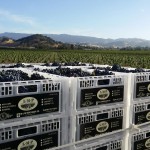
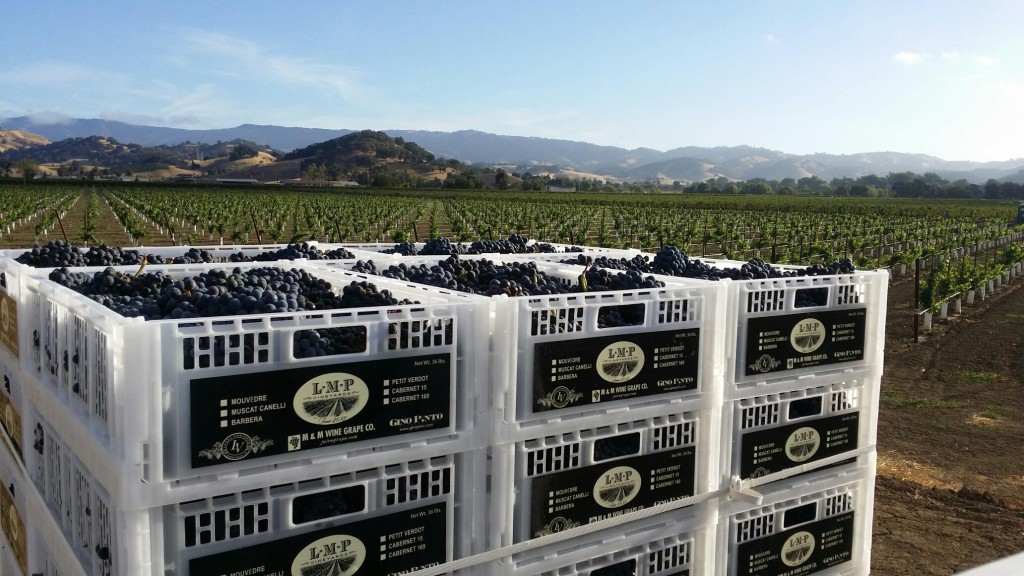
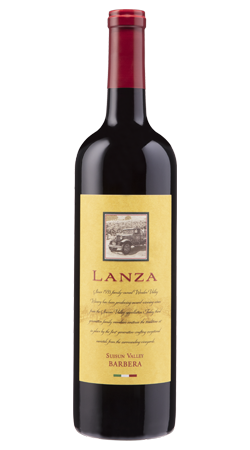
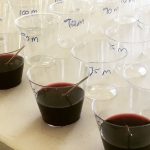
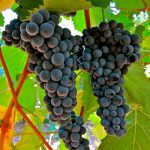
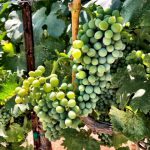
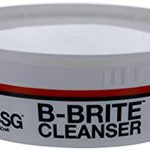
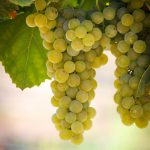
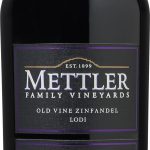
Recent Comments